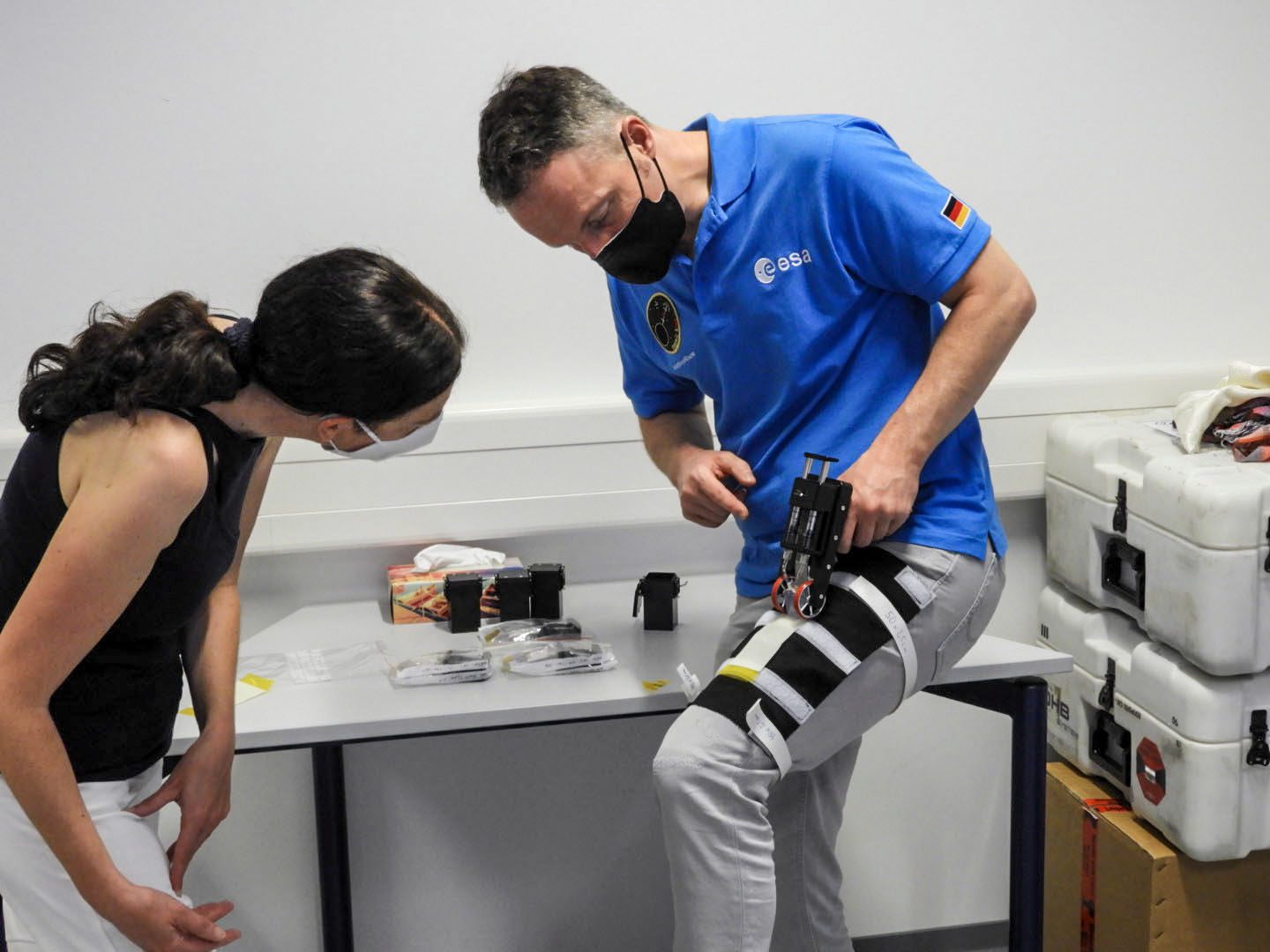Bioprinted patches could help wounds heal
Researchers successfully demonstrated the function of a handheld bioprinter that could provide a simple and effective way to treat wounds in space using human skin cells. Crews could use this technology to treat their own injuries and protect crew health and mission success in the future.
Spaceflight can affect how wounds heal. The Bioprint FirstAid device tested a process for bioprinting a patch to cover a wound and accelerate healing. In the future, a crew member’s own cells may be used to create personalized patches for treating an injury. The bioprinting device is easy to use, can be tailored to specific needs, has a low failure rate, and its mechanics are electronics- and maintenance-free. This ESA (European Space Agency) investigation was coordinated by the German Aerospace Center (DLR).
Countering post-flight proficiency challenges
The day they return from spaceflight, astronauts demonstrate significant impairments in fine motor control and the ability to multitask in simulated flying and driving challenges. This finding could help develop countermeasures so crew members can safely land and conduct early operations on the Moon and Mars.
Manual Control used a battery of tests to examine how spaceflight affects cognitive, sensory, and motor function after landing. Researchers concluded that subtle physiological changes that occur during spaceflight degrade post-flight performance. Subsequent tests showed recovery of performance once exposed to the task, suggesting that simulation training immediately before a task could be an effective countermeasure. Researchers also suggest limiting dual or competing tasks during mission-critical phases.
Gamma-ray telescope resilient to space radiation
Researchers found that the station’s Glowbug gamma-ray telescope could perform in the space radiation environment for multi-year missions. Radiation can affect these types of instruments, but Glowbug regularly detected gamma ray bursts (GRBs) during its one-year operation. Studying GRBs can help scientists better understand the universe and its origins.
Glowbug demonstrated technology to detect and characterize cosmic GRBs, primarily short GRBs, which result from mergers of compact binary star systems containing either two neutron stars or a neutron star and a black hole. Short GRBs produce gravitational waves, ripples in space that travel at the speed of light. Studying these gravitational waves could provide insight into the star systems where they originate and the behavior of matter during the mergers.
Learn more about GRB research here .


Comments are closed.